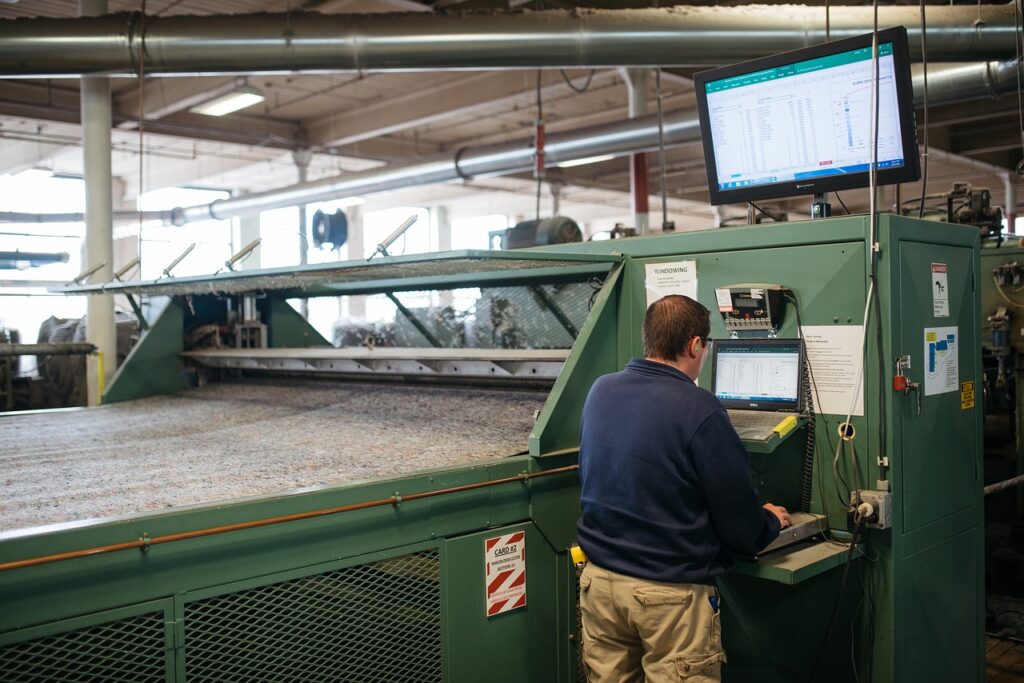There’s a great deal of political talk about manufacturing. “Make in America”, bring manufacturing back, and similar talking points prevail these days. Do politicians of either political party have useful ideas? What seems to make political leaders’ to-do lists are protectionist or just noise to satisfy some special interest group.
Some believe our leaders either don’t know what’s going on in manufacturing these days or are stuck in the past, where China’s plants of several hundred thousand workers strike a wonderful vision of how to “fix” the US economy’s manufacturing base.
It’s likely there are good ideas somewhere, but so far they seem to be missing. Some comments like “we don’t make anything anymore” are often heard, as if the US has lost its manufacturing mojo and surrendered it to China and other low cost labor countries. Do we really want the sorts of jobs that are known in Asian factories where workers earn just a few dollars an hour (if that) and may live in dormitories? That sounds like what brought on the Pullman Strike of the late 1800’s!
While there’s a grain of truth to the exodus of manufacturing to places like China, the US remains a global manufacturing powerhouse. For about 100 years the US was the world’s leading manufacturer, and surrendered the global leadership in about 2009. Now, according to a 10/23 Forbes article, China produces about 28% of global output. The US is a strong #2 at nearly 17%. So while we have lost a good deal of labor-intensive manufacturing, we remain a hotbed of overall manufacturing goods—something in the area of $2.5 trillion annually.
Want evidence? Check most midwest cities and surroundings and you’ll surely find a plethora of machine shops, fabrication businesses of one kind or another, plastic injection molding companies and a wide variety of entities that do one thing: they make things! These businesses could not exist unless someone, and usually someone nearby, needed something made for them. Not in China, either. Nearby where buyer and seller can get together quickly. It is extremely difficult to deal with product changes and other types of improvements when battling great distances, cultural differences, and language barriers. Innovation, one of the primary advantages of proximity in the supply chain, is best served with handy suppliers.
One reason why the US has strong manufacturing is leadership in innovation. World Facts listed 603 Nobel prizes have been awarded to 962 individuals, of which the US has claimed 377. No other country has half that many. China has 6. Innovation is essential for successful manufacturing, especially as time creates model changes, etc. at an alarming pace. Doing the same thing over and over is a prescription for being replaced.
It is undoubtedly true that over the past decades very many countries exported jobs to foreign countries, especially China. Most of this was to take advantage of low labor costs, and industries such as textiles remain difficult to reshore for that reason.
Despite the favorable conditions for SOME manufacturing in the US, bringing jobs back can be problematic. The US has advantageous energy costs, good logistics and transportation infrastructure, and an educated and talented labor base. High technology and high precision work has a favorable home here. But if politicians believe the days when manufacturing consumed 25% or more of the work force can return they are unfortunately misguided.
That was 50 years ago. Now that number is less than 10%, yet the country still produces a world leading (OK-#2) output. Obviously a lot more is made with many fewer workers. And with that in mind, what should leader be doing to stimulate manufacturing?
Some would say get out of the way and do nothing. But that’s not going to happen. Rather, steps that might see improved manufacturing could include things like a return to vocational training in schools. Manufacturing support activities such as electricians, welders,and machinists are currently in very short supply and also provide good wages. Computer numeric controls that manage most equipment operations these days also require several different skills. Some math is also useful for today’s sophisticated equipment operations in addition to quality control.
Most manufacturing organizations we know seek good qualified employees with usable skills for the manufacturing world. Much of what’s mentioned in the above are not easily available in big name colleges, law schools, or most liberal arts. Rather, they’re found mainly in on-the-job work, some union apprentice programs, and other things of that sort. But 50 years ago there were numerous vocational opportunities in high school that no longer exist. For whatever reason such early training has become very rare. Here is something our leaders could champion that would be especially valuable.
Energy policies that maintain cheap and abundant energy is also vital. Robotics and automation in manufacturing requires lots of energy, and the combination of it’s low cost and availability is a great advantage to the US.
Finally, some consideration to environmental laws could also help. Functions such as plating and painting which are essential in many cases have discharges and waste that can be problematic. Cooperation between manufacturers and government entities needs to be improved so these activities can operate safely and in sufficient numbers.
These are but a few things our leaders could focus on that would help manufacturing grow. After all, it’s an area where high paying jobs exist and should long into the future with enlightened governments working along side rather than against!


